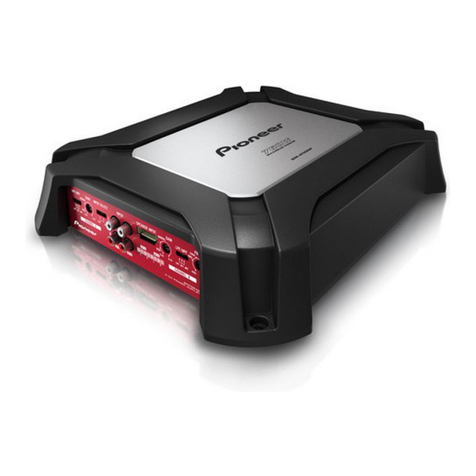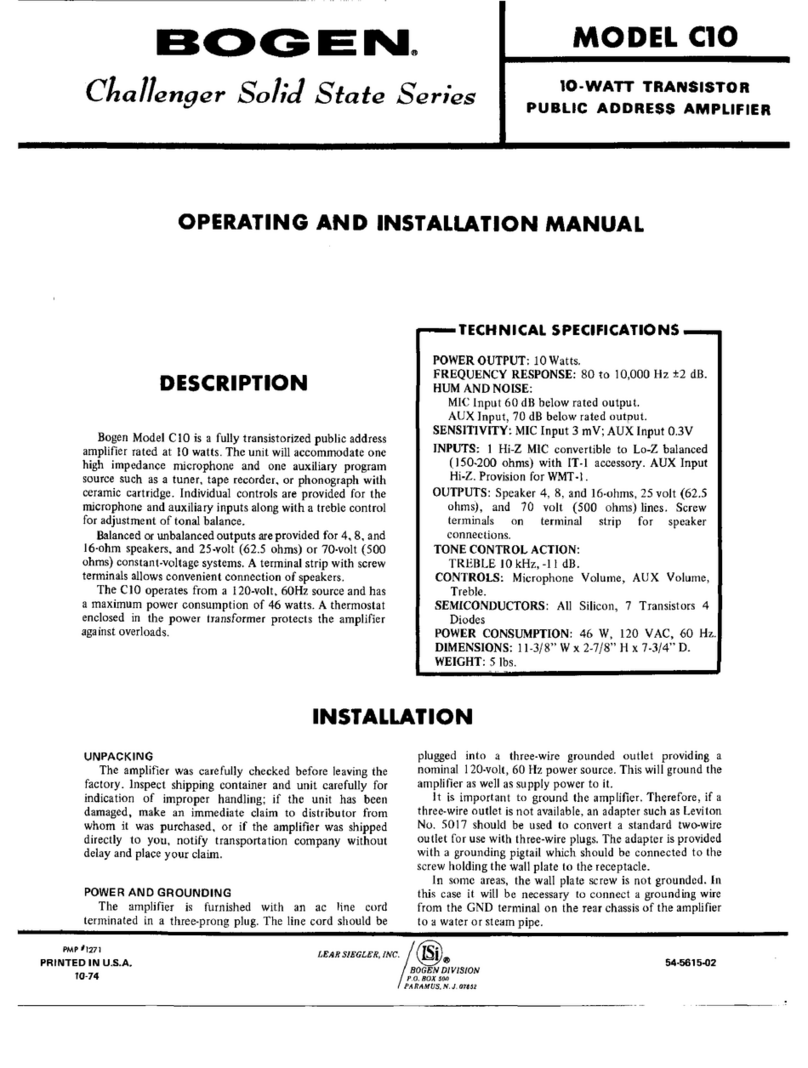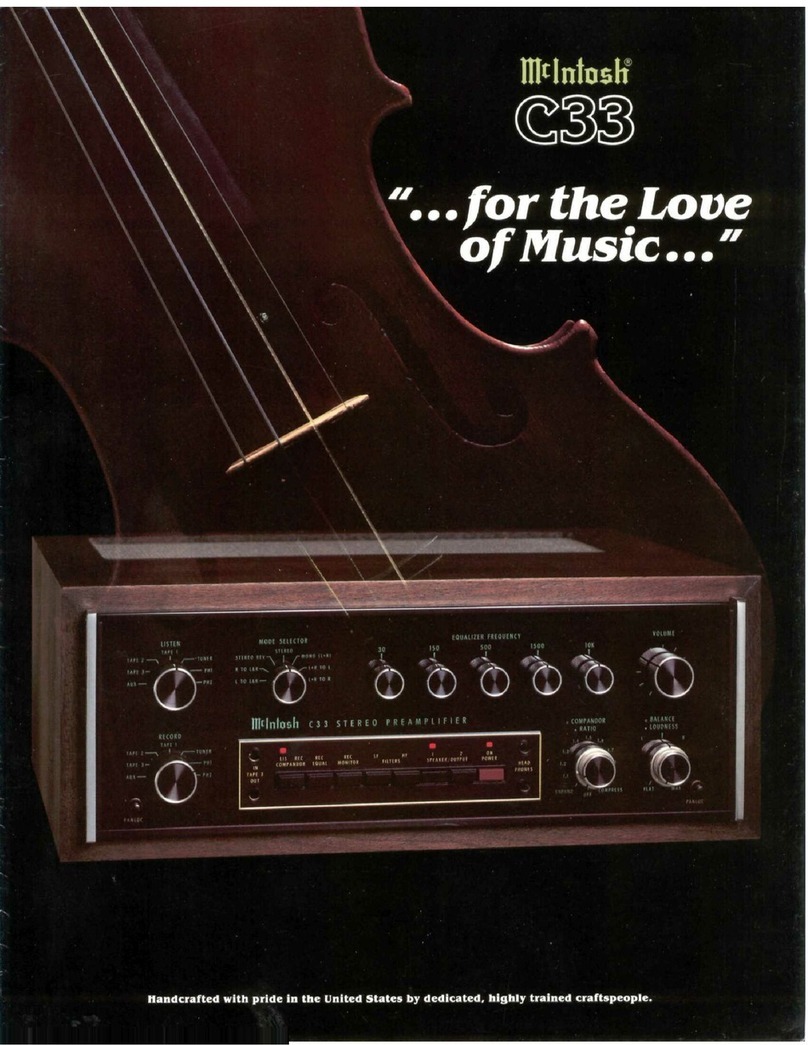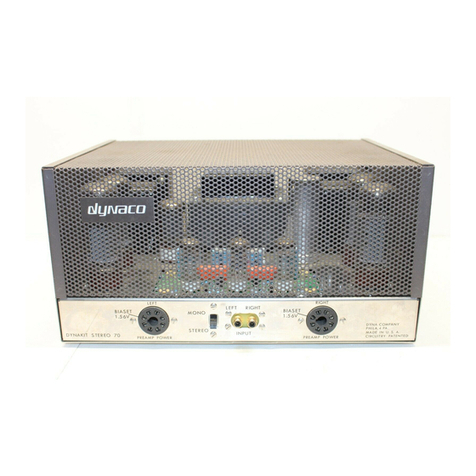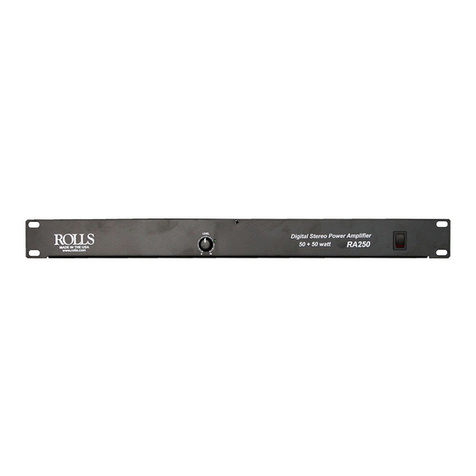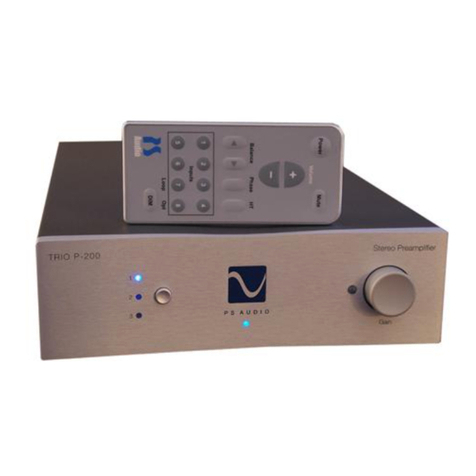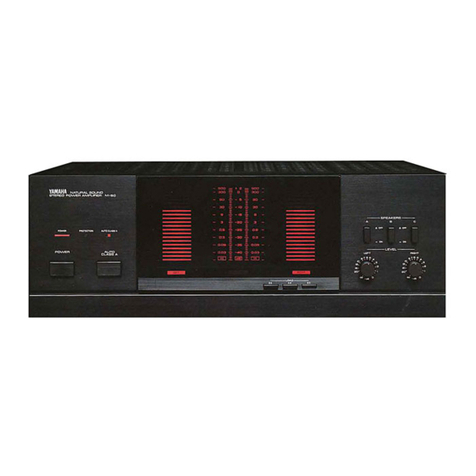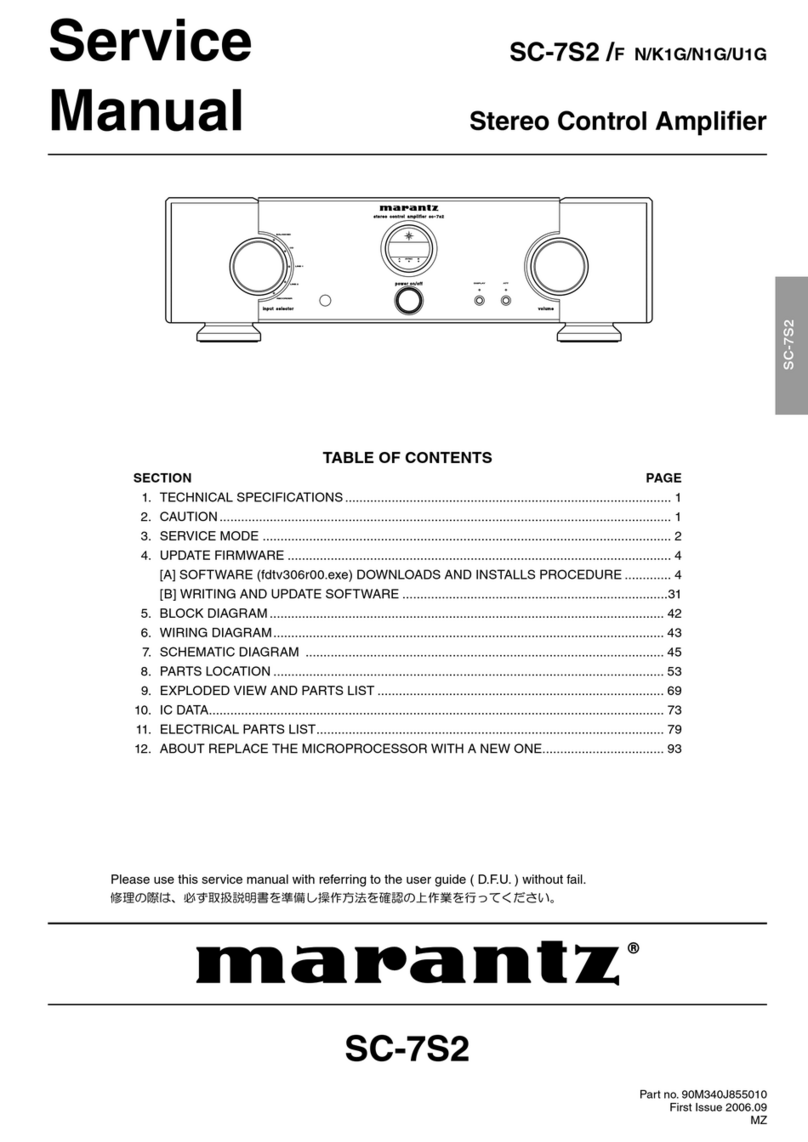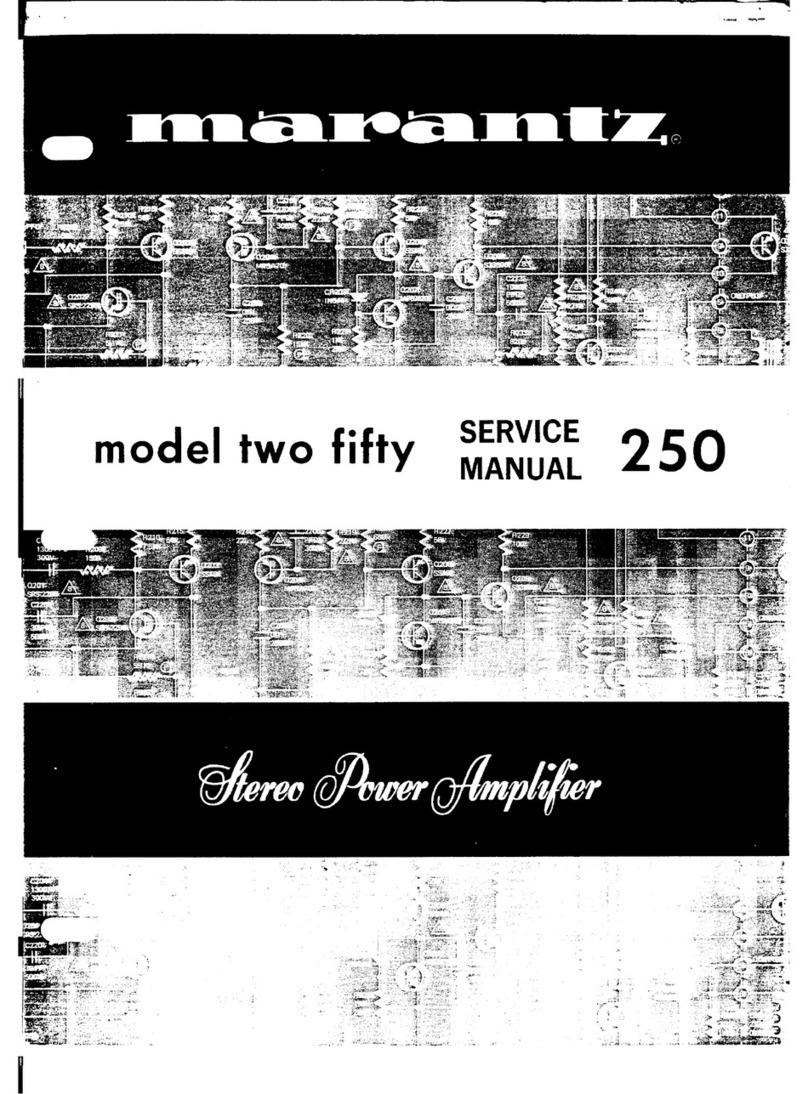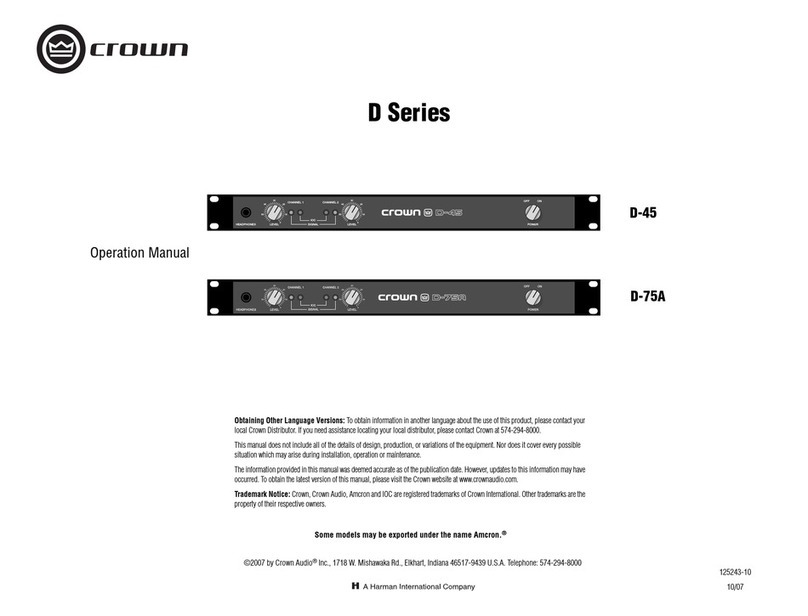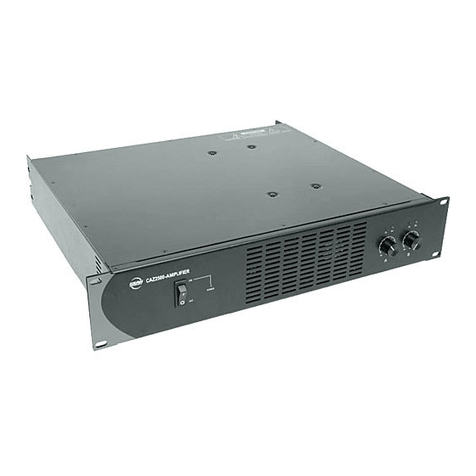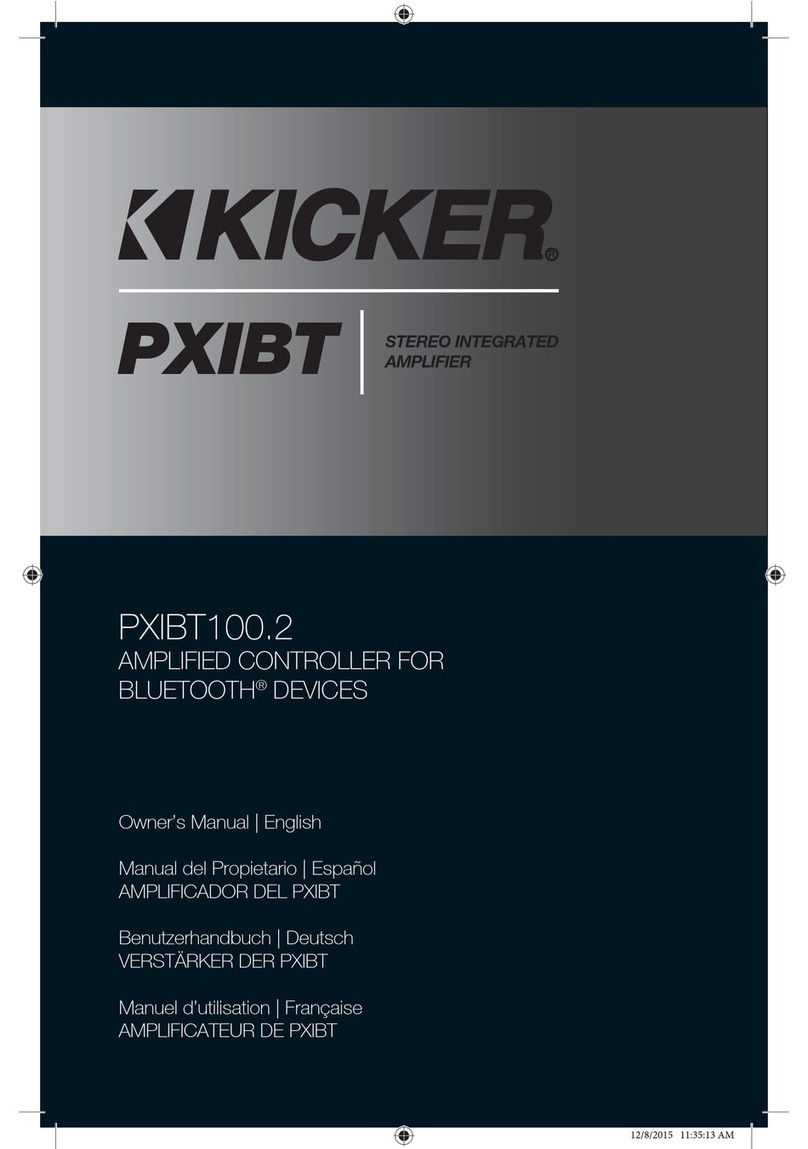SIMTEC M-31 User manual

1)131114cl ;arts
f
t
;
)
_
p-
il
spe. rieets a
t
4a
M-
3
1
MODULAR AMPLIFIER
INSTRUCTION MANUAL
Serial Number
Simtec Ltd.
Cable: Simatom
3400 Metropolitan Blvd. East.
Tel. : (514) 728-4527.
Montreal 38, Quebec
Canada.
Printed in Canada
05661\1310

Warranty
Simtec equipment is warranted against defective
materials and workmanship for one year.
Queries regarding this warranty should be directed
to your Simtec Technical Representative.
The serial number and model of your unit should be
stated to your Simtec Representative when making enquiries.
Many faults may be dealt with in the field, with the benefit
of minimum down-time for your equipment.
Simtec reserves the right to adjust specifications
and prices without notice.
This publication copyright
0
1966 reserved by
Simtec Ltd., Montreal, Canada. No part may be reproduced
without permission of the copyright owner.

.25
.125
.063
4
8
12
FINE GAIN
COARSE GAIN x8
FIRST DIFFERENTIATOR
8
.65
.
.70
.60
:
75
4
1
.5
2
2
.25
16
1.0
•
1.125
.
.85
.063
.90
8 64
12
128
B.B.
256
.55.
.50
.
SECOND DIFFERENTIATOR
OUTPUT POLARITY
DIRECT
INVERTED
INTEGRATOR
1
.5
2
B.B.
BUFFER SECTION
UPPER CONTROL
LOWER CONTROL
IN IN
OUT
IN
OUT
IN
A.C.OUT
)10
93ohms
93ohms
93ohms
NORMAL
NORMAL
NORMAL
4
44)
TERM. OFF
NO CONN.
NO CONN. D.C.
OUT (i.)
MODULAR AMPLIFIER M-31
4
32

Figure 1. SIMTEC M-31 MODULAR MAIN AMPLIFIER
Type M-31 Modular Main Amplifier is shown on the
opposite page with its controls and switches in a standard
position. With the toggle switches (Si to S4) in the normal
upward position, the preamplifier signal is introduced at the
first BNC connector on the left (J1) and, after amplifying
and shaping within the amplifier, is taken out at the extreme
right either by
a.c. coupling
(the upper connector J7) or by
direct coupling, (the lower connector J8).
The input termination switches (Si and S2) are shown
in the upward or terminated position suitable for most pre-
amplifiers. When in downward position each gives 1000 ohms
input impedance.
Controls in the Upper Control section are shown
with Fine Gain at 1.0, the maximum; the Coarse Gain knob
(outer) is shown at
8x
and the First Differentiator at 1 micro-
second.
In the Lower Control section, the Output Polarity is
set to Direct, giving the same pulse polarity at both input and
output of the M-31; the Integrator control is set to 1 micro-
second and the
Second
Differentiator is set to Broad-Band, thus
giving a monopolar pulse.
When
the controls are set as above,
the noise relative to the input is less than 15 microvolts.
(For detailed explanation of the control functions,
please refer to the text.)

CHARACTERISTICS
General
The Simtec M-31 Modular Main Amplifier is a high gain audio
to radio frequency amplifier for use in shaping and amplifying
pulses from nuclear radiation detectors. Its power is drawn
normally from an AEC Standard Bin, but may be taken from many
supplies of similar specification. Pulse Shaping and amplifica-
tion are accomplished by resistor-capacitor net-works in con-
junction with high speed operational amplifiers. Successive
shaping and gain operations are performed on the pulses as they
pass through the amplifier. The sequence and nature of these
operations is chosen to optimize the signal to noise ratio and
saturation characteristics of the amplified pulses, for all
input pulse rates and signal magnitudes.
Operational Amplifiers
The individual plug-in high speed operational amplifiers
have gain-bandwidths in excess of 1500 MHz and may give closed
loop risetimes as fast as 20 volts in 35 nanoseconds; these
capabilities are relaxed in each of the six operational amplifier
positions in the interest of overall stability. The operational
amplifiers all have differential inputs, a feature which gives
high common-mode rejection for power supply disturbances and
other forms of interference. The operational amplifiers are
direct-coupled internally, a feature which gives optimum
recovery from overload and which, together with the differential

inputs, provides maximum gain stability through stabilization of
the transistor bias points.
Feedback Control
Feedback networks are used for pulse shaping and gain
determination rather than interstage attenuating networks for
the following reasons:
---Potentiometer loading effects are eliminated; thus gain and
time determining circuit elements may be given values which
are simple ratios to one another.
---Resistor-capacitor combinations may be used exclusively
in networks which synthesize transients. Capacitors have
the advantage over inductances that for wide frequency ranges
they have better phase shift and dissipation characteristics;
moreover, the quality of component required for the level of
stability achieved in the M-31 is more readily available in
capacitors than in equivalent inductances.
---Signal to noise ratio is nearly independent of gain; at
minimum gain, signal to noise ratio of the amplifier with
gain control in the feedback loop is much superior to that
for the amplifier with interstage attenuators, because with
the former the noise of the gain stage is reduced in propor-
tion to the signal, but not with the latter.

---Gain stability is not favored by amplifiers with interstage
attenuators and filters; loading effects on interstage net-
works demand that these networks see constant impedances at
both input and output. When gain and shaping are determined
by feedback networks, these computing networks are not loaded
by the surrounding circuitry and no instability can result
from this source.
Front Panel Arrangement
Each section of the M-31 is provided with controls and/or
connections on the front panel of the AEC standard four-width
module. In the schematic diagram, BNC connectors are numbered
from left to right on the front panel, as are the switches.
Connections marked "Buffer Section" are associated with Opera-
tional Amplifier No. One. Connections marked "Upper Control"
are associated with Operational Amplifiers Two and Three; this
group is controlled by the "First Differentiator "and" Coarse
Gain" rotary switch, and by the "Fine Gain" potentiometer
to its left. Connections marked "Lower Control" are associated
with Operational Amplifiers Four, Five and Six; this group is
controlled by the "Integrator" and "Second Differentiator"
switch and by the "Polarity" switch to its left.

Power Requirements
The M-31 requires about
8.4
watts of D.C. power as follows:
24 volts at 150 ma and ± 12 volts at 50 ma. This power is
available from any modular power supply of The NBS/AEC standard
type (per TID 20893, Louis Costrell) or of The Lawrence
Radiation Lab.
Linear Amplifier 11x198 type of bin supply
(Goulding and Landis design,
used by
several
manufacturers).
Ripple and regulation specifications
of either
of these types
of supplies are adequate for
most high
quality spectroscopy.
Power decoupling and gain stabilization within the M-31 permits
use with a wide variety of supplies.
When used without an AEC Standard Bin, The noise suppression
and shielding precautions within the M-31 are adequate for most
use on the bench, or in a nonstandard rack mount.
Power Connections
The mating connector required is an AMP No. 202516-3, 42
pin female block, with AMP "Type III
" Socket contacts mounted
as follows:
Pin number 16 12 volts
17 - 12 volts
28 4- 24 volts
29 - 24 volts
34 - GROUND.
Shielding of the nonstandard cable may or may not be required,
depending on the severity of the RFI environment.

Grounding
For optimum system noise performance, a certain minimum
of care must be taken with the grounding. Precautions advised
are:
1
Make sure that grounds for the preamplifier, detector
bias supply and M-31 are
close
to being the same ground,
when the single input is used; and
2
when ground at the preamplifier is "exported" through
a cable for common mode rejection of pickup, try to match
the cable lengths and source impedances as exactly as
possible for minimum readjustment of RVI and
c3
common
mode trimmers.
Construction Features
The M-31 fits four module widths (5.4 inches) of a standard
AEC bin. It consists of ten major assemblies as noted on the
system schematic. Six of
these
assemblies are the six opera-
tional amplifiers which are plug-in units mounted in individual
shield cans over 22-pin edge connectors. The edge connectors,
in turn are mounted on a common assembly called the "mother
board" which contains the bulk of passive components not mounted
on the Upper or Lower Control rotary
switches.
Each operational amplifier
has
a small hole near the top
end which permits removal for servicing or inspection.
Each transistor is socket mounted, also for ease of inspection
or replacement should the need arise.
Each of the three major outputs has a spare high stability

resistor mounted on the mother board as indicated on the system
schematic. This feature permits the user to mount extra
connections on front or back panel of the module at a later time
should the need arise. The common source impedance directly on
the output of each operational amplifier is less than 0.1 Ohm
when two or more such loads are used.
All semiconductors used in the M-31 are silicon units, unselected.
All precision resistors surpass specification MIL-R-10509E,
Characteristic "C" or better in all gain-determining positions.
All carbon resistors are of the high-stability, high reliability,
hot molded type, surpassing performance required by specification
MIL-R-IIE, Characteristic "G".
The etched wiring boards are of high peel strength double-sided
glass epoxy laminate.

M-31 OPERATION IN SIMPLE SPECTROSCOPY
In normal use any noise contribution from the M-31 is
not likely to affect spectral resolution. Resolution is
dependent first on the detector and preamplifier, but in
the main amplifier the greatest dependence is on pulse shaping.
The pulse shaping in the M-31 gives about 20% reduction in
noise compared with the usual single RC differentiation and
integrator smoothing. The pulse shaping also gives excellent
recovery from overload by means of close control of the
trailing edge of the pulse; when bipolar shaping is used for
high counting rates, the overload recovery is exceptionally
good for the above reason and also through the use of direct-
coupled, high-gain transistor amplifiers.
A signal passing through the M-31 is
amplified
twice
in the Buffer Section consisting of Operational Amplifier
Stage
number 1, two
inputs, one output connector and the
common mode adjustments. In normal use input BNC connector
JI is used together with output connector
J3.
For common
mode operation inputs JI and J2 are used together.
Through connection to the Upper Control section is made
by toggle switch
S3 in Normal position.
The First Differen-
tiator switch then controls the trailing edge time constant
of simple RC clecay.
The
second and third operational amplifier

stages have gains from 1 to 16 which are switched alternately
to give the Coarse Gain of the panel markings. The Fine Gain
gives a little more than two to one continuously variable gain
control. Output from the Upper Control Section is at J5, and
in general is a fast-rise-exponential decay pulse.
If switch S4 is in Normal position the Lower Control
Section receives the signal and it continues to the two low-
pass filter-amplifier stages 4 to 5 controlled by the switch
marked "Integrator". These filters limit the rise time of the
pulse and permit optimum shaping for both high resolution and
high counting rate. (Baseline Shift is negligible except for
that caused by pulse overlap).
Internal connection carries the signal from the output of
stage 5 to the Second Differentiator coupling capacitors.
At this point the signal is monopolar
and is
suited for
moderate counting rate very high resolution spectroscopy.
If the second Differentiator is set to
the
broad-band (B.B.)
position at 5
o'clock, the
signal
passes
through the polarity
Switch (S5) to the output
stage (0.A.6)
and is made
available
at a signal level up to 20 volts via a.C. output at J7 or dec.
output at J8. When a time constant is selected on the Second
Differentiator switch, the signal becomes bipolar, with positive
amplitude the same as the amplitude of the monopolar pulse,
provided equal time constants are selected. The Polarity Switch
is used in the "Direct" position for
the same
polarity pulse
in and out. When Inverted, the opposite polarity is obtained
with the same amplitude.

When all switches
are in Normal
position, both inputs
have
93
ohms input
impedance. With SI
in the
"termination off"
position the input impedance is 1000 ohms, suitable
for most
use when
the preamplifier has
a series termination placed at
its
output.
The signal is
then normally introduced at JI with a
level up to ±5 volts and taken out
at J7.

INTERNAL AND CALIBRATION ADJUSTMENTS ON THE M-31
Operational Amplifier Balance
Some operational amplifiers have d.c. balance controls.
These controls are high stability, infinite resolution, metal
film trimmer potentiometers which are set to within several
millivolts at the factory. Unless one of the input transistors
is changed by the user it is unlikely that further attention will
be required.
Pulse Symmetry Control
On the output operational amplifier (stage number six) is
a metal film trimmer used to balance bias current differences
which give rise to pulse shape differences. This control is
adjusted at the factory and is unlikely to require any further
adjustment even if related transistors are replaced.
Common Mode Balance
The low frequency and high frequency common mode gain
controls are marked RVI and C3 respectively. The adjustment
is made using two short cables of length the same within a few
millimeters and fed from a common signal source by means of a
BNC T-shaped connector. An oscilloscope sensitive to 5 milli-
volts per centimeter should be used to observe a null when the
signal is fed through the entire amplifier. One microsecond
shaping is convenient.

If the single sided input (at JI) produces a signal of
20 volts peak value, and the common mode (JI and J2 inputs)
residual pulse has a peak amplitude of 10 millivolts or less,
the common mode rejection ratio is better than 2000 to one.
The above adjustment is made on each unit at the factory.
Crossover Walk Adjustment
Crossover walk is adjusted to within a nanosecond for
each gain setting by equalization of the rise times through
amplifiers 2 and 3. The rise times are controlled by capacitors
C17 to C21 and C27 to C31 on the Gain Switch assembly. The
rotary trim capacitors are marked with a dot at one end to
identify maximum capacity; the slug-type trim capacitors ac-
cessible from the left hand side of the unit decrease in ca-
pacity as the slug is turned clockwise; capacitors C21, C30 and
C31 can be adjusted through holes in the mother board from the
right hand side, as well as from the left.
The procedure used at the factory is to set up a doubly
differentiated pulse with .125 microsecond shaping to observe
the crossover timing with an externally triggered oscilloscope.
The input pulse is obtained through a step attenuator with ldb
steps. Starting with a gain setting of X1 and attenuation about
10db, capacitors C17 and C27 are increased to give about
55
nanoseconds risetime as observed at the output of the Upper
Control Section (incl. J5). The step attenuator is then
increased 6db at a time as the gain is increased each step of two;

C19
CI8
FRONT
C21
rC3O
CI7
CROSSOVER WALK ADJUSTMENT TRIMMERS

I
te
TRIM ADJUSTMENTS ON MOTHER BOARD

the appropriate capacitor is then adjusted to maintain the
bipolar output crossover timing within ± 1 nsec, starting with
C18, then C28, etc, until all gain settings are adjusted.
Overall Gain Calibration
A high stability metal film trimmer located between ampli-
fiers 2 and
3
provides ± 10% control for overall gain calibration.
In broadband condition the overall gain for the M-31 is approxi-
mately 16X. This may be made exactly 16X by use of the trimmer
to accomodate variations from unit to unit.
Integrator Damping Controls
Each integrator stage has a damping control (RV3 and RV)4)
which
permits fine adjustment of the trailing edge of
the pulse. These are usually adjusted together to allow minimum
secondary overshoot in bipolar shaping and may be trimmed to
advantage depending on the preamplifier clipping time. At the
factory these adjustments are set for optimum overload return
when used with amplifiers having the P-10 clipping time about
250 microseconds.

Shipping Instructions
On receipt of shipment, the equipment should be
checked to see that no damage has occurred during shipment.
If the equipment malfunctions or has apparent damage, a
report should be made immediately to the carrier's claim
agent, and also to your Simtec Technical Representative.
You will then be advised what action to take.
If shipment to our plant should prove necessary
be sure to pack the equipment adequately. Any damage due to
inadequate packing on warranty return will be repaired at the
customer's expense. A quotation for customer approval will
be sent before such repairs are made.
For fastest service, shipments should be made via
air freight through the agents designated by your Simtec
Technical Representative.

DETECTOR BIAS
k
No
tk'
t
FET PROTECTION
P-11 SET UP INSTRUCTIONS
(When used with M-31 MAIN AMPLIFIER)
D. C. POWER
SIGNAL INPUT
SIGNAL OUTPUT
-
From Bendix power plug on rear panel
of M-31 via CS-11 cable assembly.
-
To BNC connector on P-11 labelled
detector input.
-
Automatically connected to input of
M-31 via CS-11 cable assembly. NO
BNC CABLE NEED BE USED BETWEEN P-11
and M-31.
When P-11 and M-31 are used together
input switches Si and
S2
on the M-31
must be placed in opposite senses. If
Si is up then
S2
must be down; to re-
verse polarity simply reverse the
positions of Si and
S2
or use the
polarity switch on the M-31.
Use MHV connector on rear panel of
M-31 linear amplifier.
The P-11 incorporates a circuit which
protects the input FET's from burnout
against detector bias transients of
±1000 volts.
DETECTOR BIAS DISCHARGE
-
The P-11 incorporates a circuit which
allows the detector bias voltage to
drop to zero in less than one minute
after the bias voltage supply is
switched off. This permits the user
to disconnect the P-11 from the de-
tector, one minute after the detector
bias is switched off, without damage
to the input FET's. This circuit
places a 66m2 resistor in parallel
with the detector bias supply. Hence
the detector leakage current will read
an artificially high value with the
P-11 in circuit. The true detector
leakage current must be determined
before the P-11 is connected to the
detector. This 66m) resistor does
not affect the noise performance of
the P-11 in any way.
NOveMbere
19 . •



